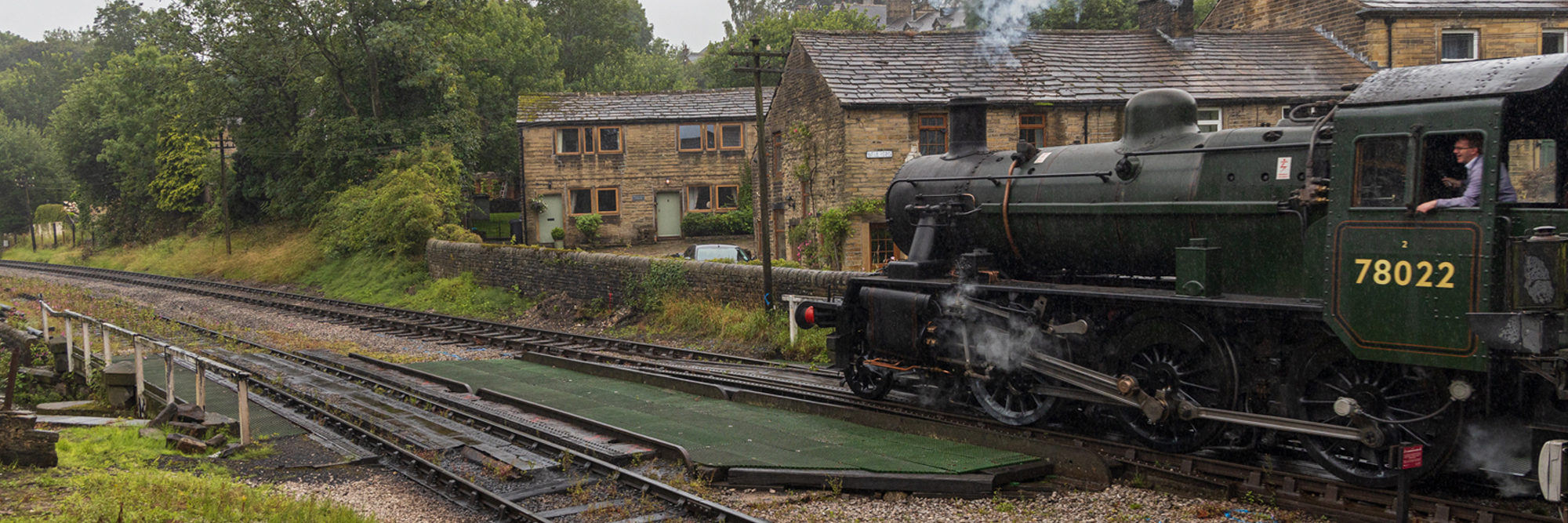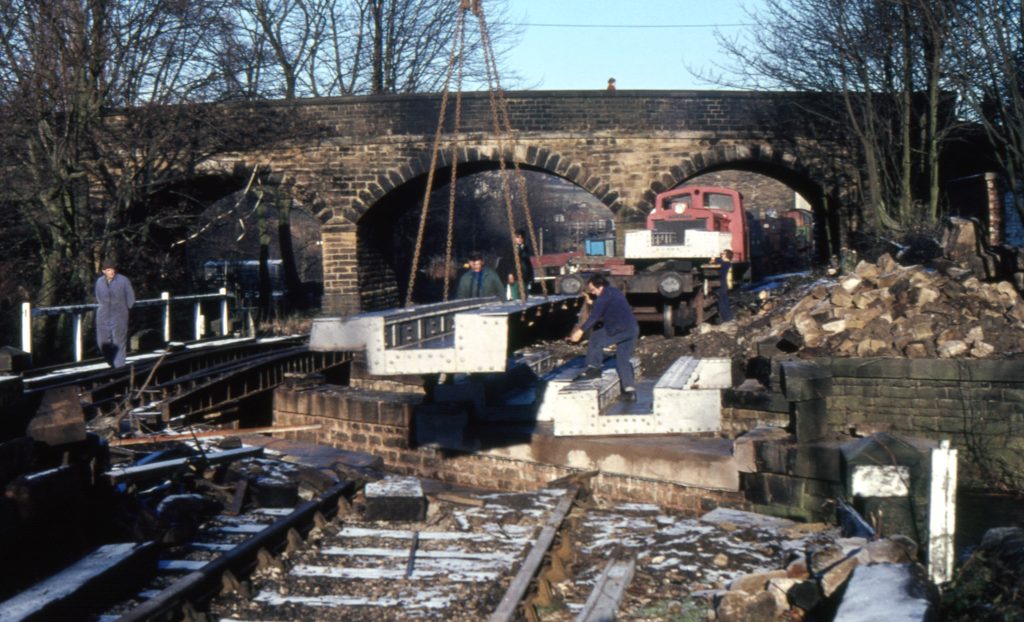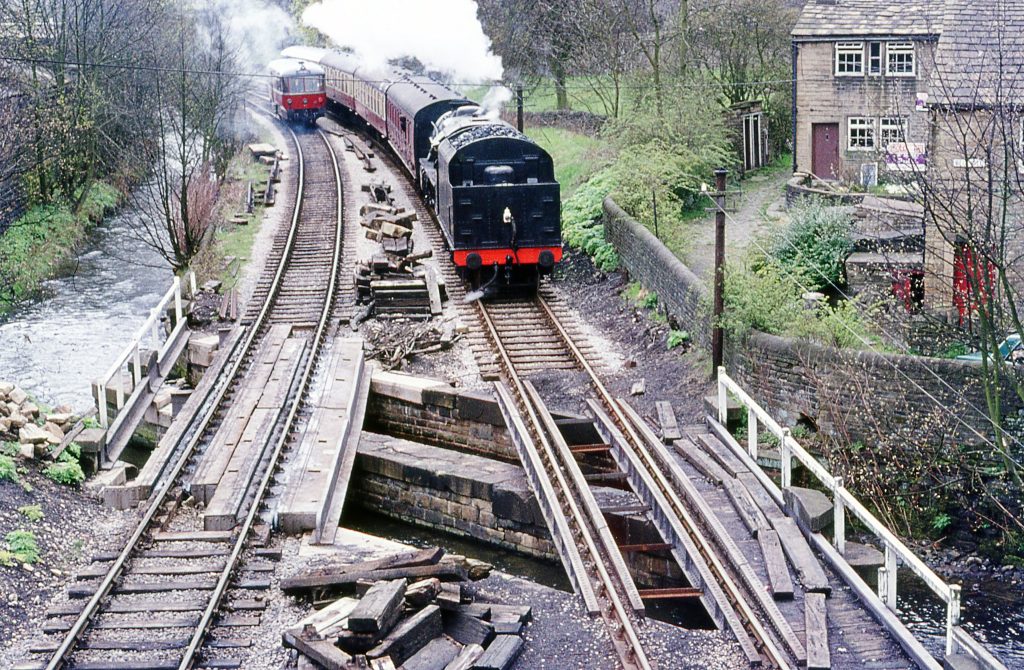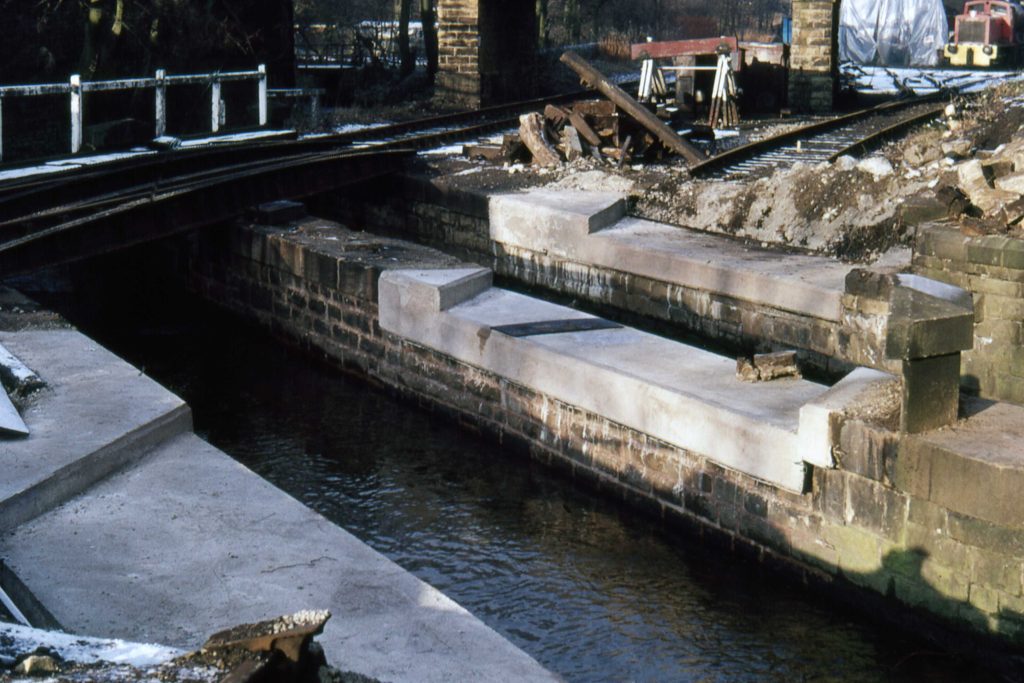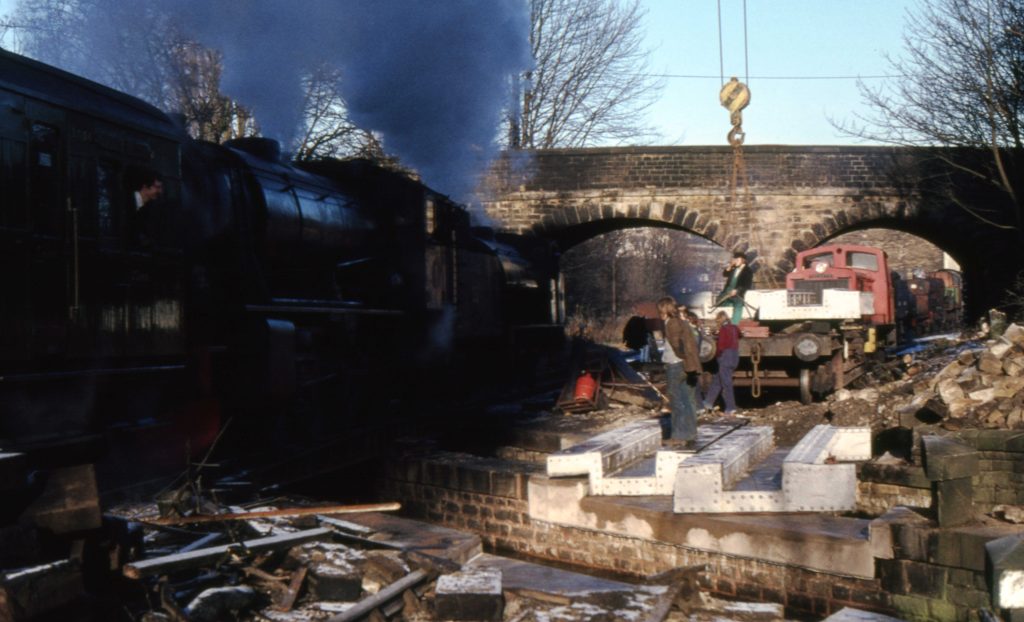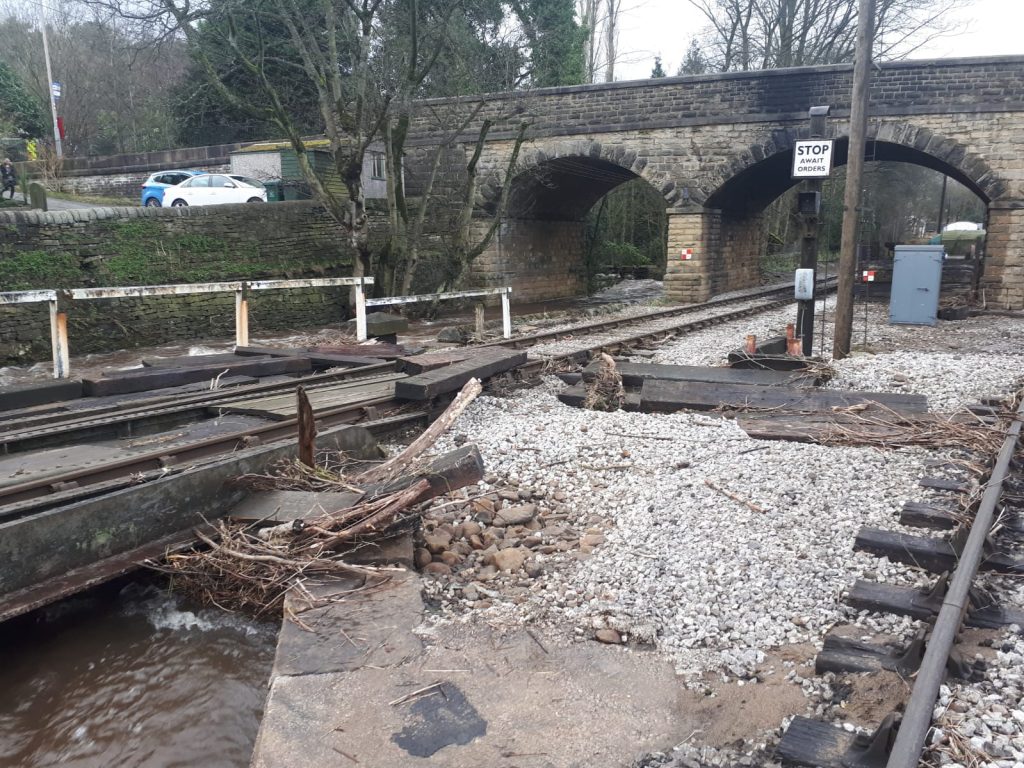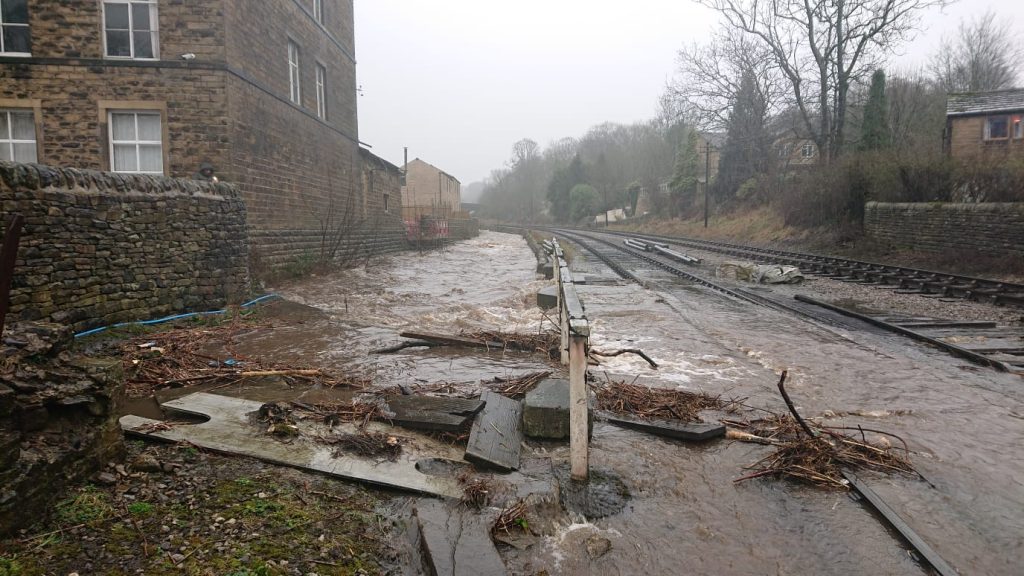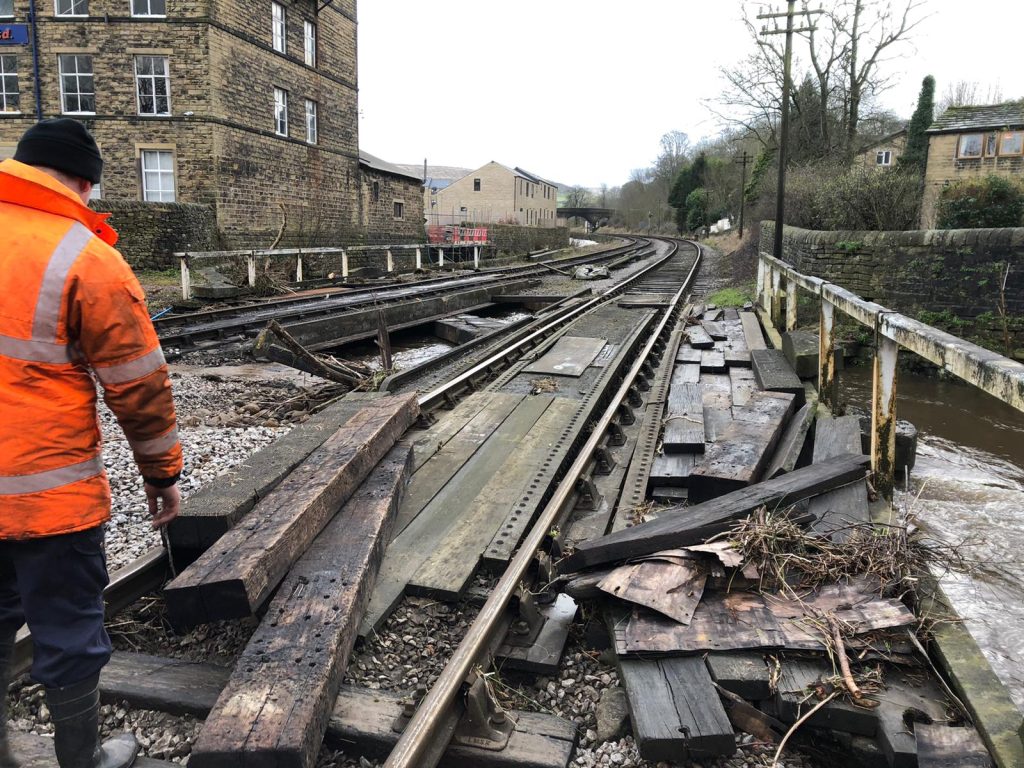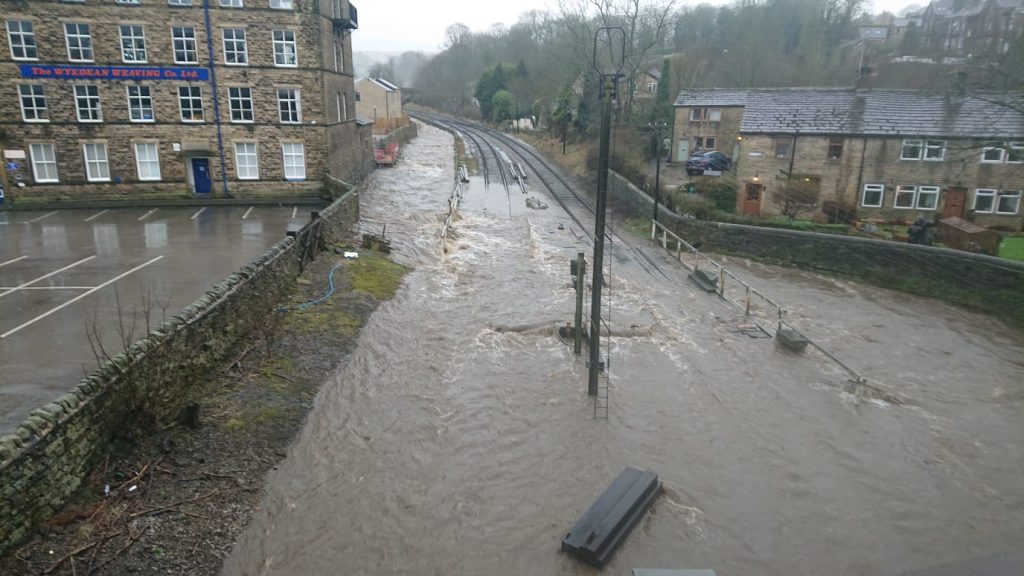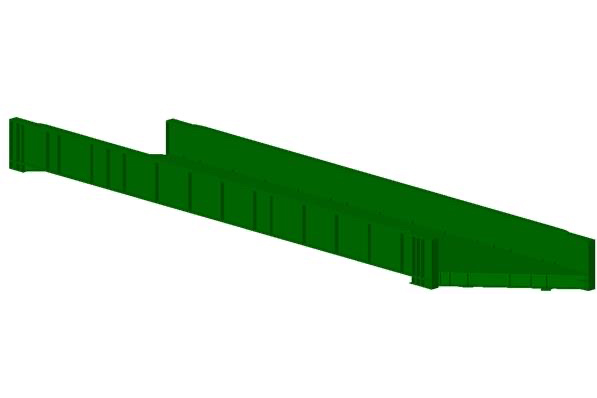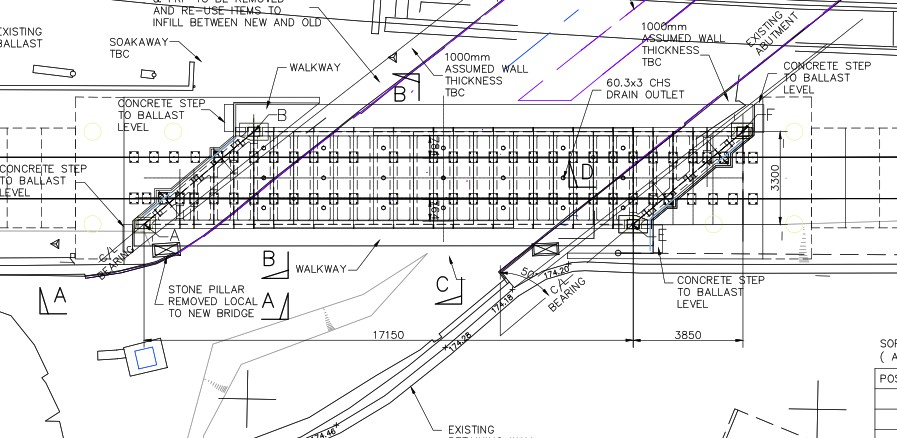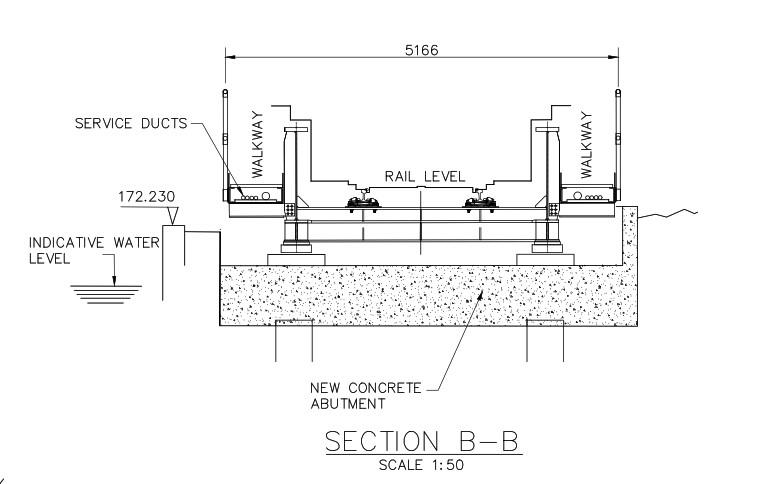The Bridge 27 renewal project is quickly coming over the horizon as the next big civil engineering project for the railway. The planning and design are well underway, with September 2024 being the current target date for the main bridge renewal with a three-week closure planned. However, changes will soon be visible in the area as we start the preliminary works.
The original bridge was built in 1867 before the current bridge was built as part of a reconstruction in 1889. The existing bridge is two separate structures carrying the railway over Bridgehouse Beck, but the two structures share the same abutments and pier. The upstream structure, called the siding span, carries the line into Haworth Yard. It received significant work in the late 1970s and is not part of the upcoming scheme. The downstream structure, referred to as the main line-span, now needs renewal. This is due to the condition of the abutments and pier it sits on and the iron girders themselves.
Development work has been ongoing for around a decade, with the initial plans to renew the bridge like for like. After several flooding incidents, which were contributed to by the restrictions in the river around Bridge 27, we looked at what we could do to improve this while also renewing the structure. The development began to look at an option to build a longer span to remove the need for the central pier and improve the beck flow.
The development and planning slowed down due to the condition of Bridge 11 deteriorating and becoming more urgent; all resources were focused on getting Bridge 11 replaced quickly, which was slowed down by the COVID-19 Pandemic stopping work.
Once we had recovered from Bridge 11, development continued with the longer span and removal of the central pier. While the initial aim was to improve river flow, this approach has other benefits. As the existing abutments and piers are in poor condition, there is a lot of work in and around the river, which creates a longer construction timeline but also is inherent with risks due to environmental restrictions and also flood risk, with work not possible if river flows increase substantially, and restrictions to protect wildlife preventing work for much of the year. As renewing this bridge cuts off Haworth Yard from the rest of the railway, keeping the closure length down is essential. In addition, the method of fastening the track to the structure is not the most ideal, with the way beams create a long-term maintenance liability. The current design would remove this arrangement, making future track maintenance significantly easier.
The current proposal is to replace the existing bridge with a larger steel structure, sitting on piles (deep foundations) which will be installed behind the existing bridge abutments. The new structure would be a large steel U-shaped deck. The outline design is being undertaken, allowing us to spend this summer planning the work and refining the design to start applying for consents and booking contractors towards the end of the year.
The new steel deck will be lifted into place by a 500-ton crane; the crane size shouldn’t be underestimated, and it is the biggest crane to have been used on the railway. The deck will be lifted onto the pile caps, which sit on top of the piles and transfer the load from the structure into the piles. Each pile cap will be sat on five piles, approximately 600mm in diameter and 16m deep. This will be drilled using rotary augers to minimise surrounding ground and structure disruption. The piles are expected to be installed from the 13th of May 2024; once the piles are in place, the track will be reinstated, and the railway will run during the summer as normal, apart from a 10mph speed limit over the bridge.
On Monday 2nd of September, the big work beings, with the existing bridge being removed. The Bahamas Locomotive Society’s 50-ton steam crane will assist with work, as they did with Bridge 11; this allows all the demolition work to be done in-house, and we are grateful to BLS for their assistance. The piles will then be exposed, and an external contractor will take over the complex construction of the pile caps. Once the pile caps have achieved strength, the bearings are installed, and the bridge deck can be lifted into place just like that!
This will be, without a doubt one of the biggest civil engineering projects the railway has undertaken. The complexity, scale and costs are far beyond that of the Bridge 11 renewal in 2020. Inflation of construction materials is pushing the prices up almost monthly, although hopefully, inflation is starting to reduce.
While we will be using sub-contractors for a reasonable amount of the work, it is worth noting that The Keighley & Worth Valley Railway will be delivering this project as the main contractor with our very own qualified team of volunteers. Keep an eye out for future updates on the project, including via our Civil Engineering department’s own Facebook page.
The Keighley & Worth Valley Railway has been run by an army of qualified volunteers, from locomotive drivers to track maintenance engineers, station foremen and society directors over the past 60 years. The volunteers literally keep the wheels turning!
Financial donations help keep the railway on track. Without such donations, we could not have started the society and it remains the case that the railway relies on them now to cover the costs of maintaining the railway, special projects and capital expenditure.

